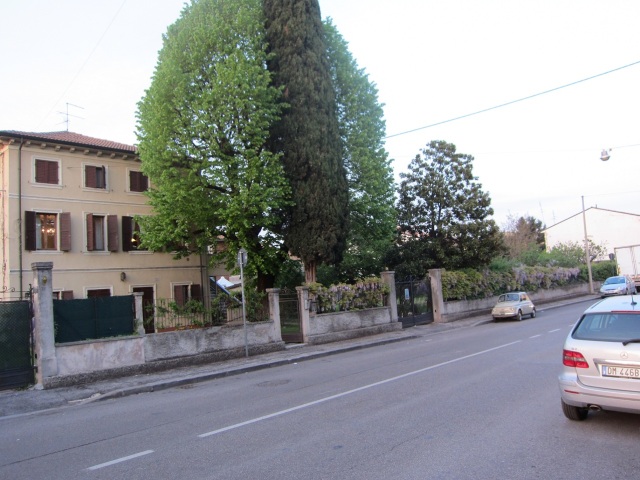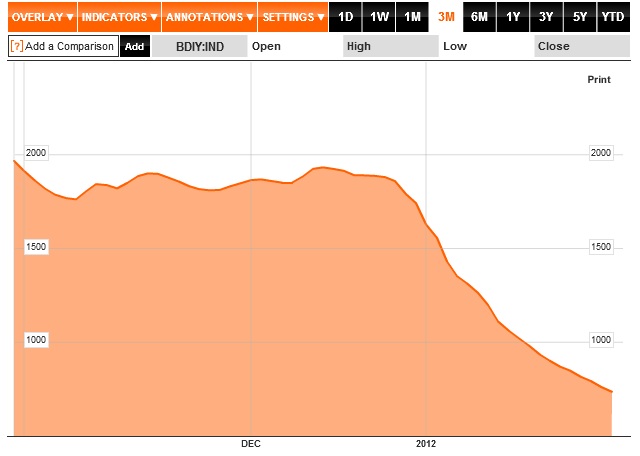1912 – 2012
I recently found this quite remarkable photo:

This in north east Italy in 1912, some 40 km south of the then border to Austria-Hungary. What’s happening is that electricity cables are being set up with a ladder on wheels. My main interest though, is the house in the background and the second fellow from the left who is my great grandfather (While being Swedish I have some Italian roots).
My great grandfather had the house built in 1909, and he must have done a pretty good job, because the house is still standing today relatively unchanged. I visited it two weeks ago and tried to take photos from the same angle. There is now a quite heavily trafficked road on the spot where the photographer from 1912 stood:

Nice work great grandpa!
When done right real estate can be a truly long term investment. Even if one assumes – following the lessons of the Herengracht index – that the price of the house has more or less just kept pace with inflation since 1909 (with a temporary dip in 1944-45), the value in housing provided over 100 years is immense.
Starting with the telegraph which came before electricity and is the black tube sticking out from the right of the house in the 1912 photo, to central heating and most recently internet broadband, the house has seen plenty of upgrades and modernisations. However, in inflation adjusted terms, I don’t think the cost of any of the upgrades are on the same magnitude as the initial cost of building it in 1909.
So essentially my great grandfather managed to provide mortgage-free housing for his descendants for 3-4 generations, and given the excellent shape of the house I don’t see why it wouldn’t keep going for another 100 years and 3-4 more generations.
In the long run we are all dead, but our houses will still be there
I’m thinking that if my great grandfather managed to build a house lasting over a hundred years back in 1909, I should be able to do the same in the Ivory Coast today.
It kind of raises the question of how to value and look at investments with a horizon longer than a lifetime. First there is the financial way of looking at it. One can get the exact price today of one euro in 2112, by using the current market based discount factor. However, knowing that I most likely won’t be alive in 2112, is that one euro (or whatever currency will be used in 2112) still worth something to me today?
I guess my grandfather would have said yes to that same question if asked back in 1912 when he was 62 years old. And I am also thinking a euro in 2112 or maybe even 2212 has a non-zero value to me. I think there are evolutionary reasons for wanting to provide for one’s offspring even after one’s death – a bit like the ideas in The Selfish Gene.
And regardless of descendants I think many people – me included – would take pleasure in knowing they are doing something that will leave a positive mark beyond their lifetime. Not sure if it’s an ego thing, some sort of wish for immortality, or a way of seeing the whole of humanity as one’s descendants, which genetically speaking I would think is a pretty correct way of looking at things.
Either way, if in 2112 a great grandchild of mine found this blog it would be pretty awesome, especially if there was still something left of my investments in the Ivory Coast (or elsewhere) that were useful to the grandchild. Not sure of the longevity of blogs though, guess I’ll have to complement with more analogue media.








